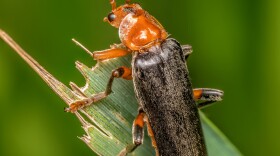If you haven’t heard of the Asian Giant Hornet before, you might be more familiar with their other, more sinister, name …the Murder Hornet.
As the world’s largest species of hornet, Asian Giant Hornets are fierce predators with a preference for honeybees.
Five times their size with massive mandibles and a thick exoskeleton to protect against stings, the bees don’t stand a chance against even a few of these giants. Less than 50 hornets can wipe out a colony of tens of thousands of bees in just a few hours, taking the fallen as food for the developing hornet young.
A seemingly unstoppable enemy …unless you’re a Japanese honeybee.
Unlike non-native species of honeybees that were imported to Japan for their higher honey production, Japanese honeybees evolved alongside the hornets. So, it’s no surprise that they developed a defense strategy against these hive marauders.
If a lone hornet scout finds a Japanese honeybee hive, it will scent-mark the hive and then bring in some backup. An effective method in launching an attack …unless the message never reaches the rest of the hornet raiders.
To prevent the whereabouts of the hive from being passed along, rather than immediately attacking the scout, the honeybees lure the hornet into the hive. Once the hornet makes a move to kill one of the hive members, it’s game on. They swarm, forming a ball of energetic bees surrounding the intruder.
This vibrating ball of bees generates heat of more than 115 degrees Fahrenheit. And since the hornets have a lower heat tolerance than the bees, the invader is literally cooked to death.
And that, my friends, is the Japanese honeybee’s recipe for survival.





